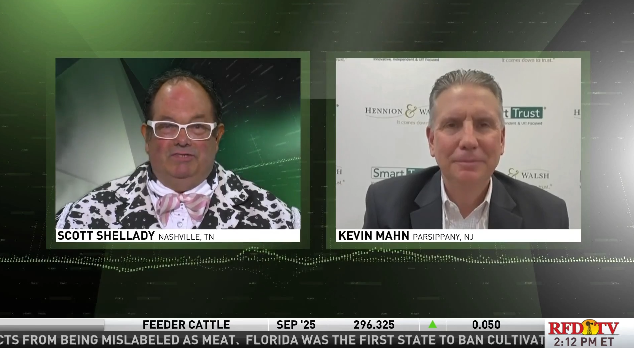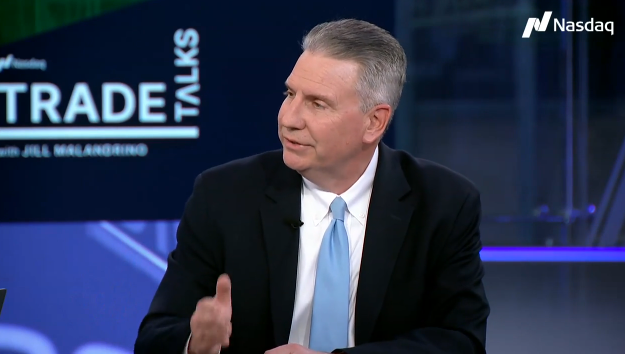
Last Week’s Markets in Review: Will Market Volatility Lead to a Santa Claus Rally?

Global equity markets finished higher for the week. In the U.S., the S&P 500 Index closed the week at a level of 4,726, representing a gain of 1.25%, while the Russell Midcap Index moved 1.51% higher last week. Meanwhile, the Russell 2000 Index, a measure of the Nation’s smallest publicly traded firms, returned 4.15% over the week. International equity performance was mixed as developed, and emerging markets returned 0.64% and -0.30%, respectively. Finally, the 10-year U.S. Treasury yield moved higher, closing the week at 1.50%.
The major equity indices opened the past week with another negative session. This was a continuation of the “Risk Off” sentiment that had begun on December 16th. We believe that both the pivot by the Federal Reserve (“Fed”) to a more hawkish position and the rapid increase in the transmission rates of the Omicron variant were important factors for the markets. True to the nature of volatile markets, sentiment changed on Tuesday and the equity indices began a recovery that lasted the rest of the week. This volatility reversal is leading many strategies to believe that a “Santa Claus rally” may be in store for the end of 2021. For those not aware, a “Santa Claus rally” is a stock market event that involves a rise in stock prices during the final five trading days in December and the first two trading days in January of the next year. We would point to two specific economic releases that may be responsible for the change in market sentiment.
The first data point we will discuss is the gross domestic product (GDP) information released by the Commerce Department on Wednesday. The U.S. economy expanded at an annual 2.3% pace in the third quarter, up from the prior estimate of 2.1%. Growth in the first half of the year averaged a 6.5% annual rate. Looking forward, the general consensus among economists is that fourth-quarter GDP will ramp back up and show 5% to 7% growth.
On Wednesday, The Conference Board’s Consumer Confidence Index for December was released. The index recorded a reading of 115.8, up from 111.9 in November. Senior Director of Economic Indicators at The Conference Board, Lynn Franco stated; “Consumers worries about inflation declined after hitting a 13-year high in November, along with concerns about COVID-19.” As we have stated many times before, consumer confidence is vitally important to the national economy as the consumer accounts for approximately 70% of GDP.
Investors should consider all of the information and data discussed within this market update and many other factors when managing their investment portfolios. However, with so much data and so little time to digest it all, we encourage investors to work with experienced financial professionals to help process all of this information in order to build and manage the asset allocations within their portfolios consistent with their objectives, timeframe, and tolerance for risk.
Best wishes for a safe and happy holiday season and continued success throughout 2022!
Economic data is sourced from the U.S. Department of Commerce and The Conference Board. Equity Market and Fixed Income returns are from JP Morgan as of 12/23/21. Rates and Economic Calendar Data from Bloomberg as of 12/23/21. International developed markets measured by the MSCI EAFE Index, emerging markets measured by the MSCI EM Index, U.S. Large Cap defined by the S&P 500. Sector performance is measured using the GICS methodology.
Disclosures: Past performance does not guarantee future results. We have taken this information from sources that we believe to be reliable and accurate. Hennion and Walsh cannot guarantee the accuracy of said information and cannot be held liable. You cannot invest directly in an index. Diversification can help mitigate the risk and volatility in your portfolio but does not ensure a profit or guarantee against a loss.
Diversification can help mitigate the risk and volatility in your portfolio but does not ensure a profit or guarantee against loss.
Investing in commodities is not suitable for all investors. Exposure to the commodities markets may subject an investment to greater share price volatility than an investment in traditional equity or debt securities. Investments in commodities may be affected by changes in overall market movements, commodity index volatility, changes in interest rates or factors affecting a particular industry or commodity.
Products that invest in commodities may employ more complex strategies which may expose investors to additional risks.
Investing in fixed income securities involves certain risks such as market risk if sold prior to maturity and credit risk especially if investing in high yield bonds, which have lower ratings and are subject to greater volatility. All fixed income investments may be worth less than the original cost upon redemption or maturity. Bond Prices fluctuate inversely to changes in interest rates. Therefore, a general rise in interest rates can result in the decline of the value of your investment.
Definitions
MSCI- EAFE: The Morgan Stanley Capital International Europe, Australasia and Far East Index, a free float-adjusted market capitalization index that is designed to measure developed-market equity performance, excluding the United States and Canada.
MSCI-Emerging Markets: The Morgan Stanley Capital International Emerging Market Index, is a free float-adjusted market capitalization index that is designed to measure the performance of global emerging markets of about 25 emerging economies.
Russell 3000: The Russell 3000 measures the performance of the 3000 largest US companies based on total market capitalization and represents about 98% of the investible US Equity market.
ML BOFA US Corp Mstr [Merill Lynch US Corporate Master]: The Merrill Lynch Corporate Master Market Index is a statistical composite tracking the performance of the entire US corporate bond market over time.
ML Muni Master [Merill Lynch US Corporate Master]: The Merrill Lynch Municipal Bond Master Index is a broad measure of the municipal fixed income market.
Investors cannot directly purchase any index.
LIBOR, London Interbank Offered Rate, is the rate of interest at which banks offer to lend money to one another in the wholesale money markets in London.
The Dow Jones Industrial Average is an unweighted index of 30 “blue-chip” industrial U.S. stocks.
The S&P Midcap 400 Index is a capitalization-weighted index measuring the performance of the mid-range sector of the U.S. stock market, and represents approximately 7% of the total market value of U.S. equities. Companies in the Index fall between S&P 500 Index and the S&P SmallCap 600 Index in size: between $1-4 billion.
DJ Equity REIT Index represents all publicly traded real estate investment trusts in the Dow Jones U.S. stock universe classified as Equity REITs according to the S&P Dow Jones Indices REIT Industry Classification Hierarchy. These companies are REITs that primarily own and operate income-producing real estate.



